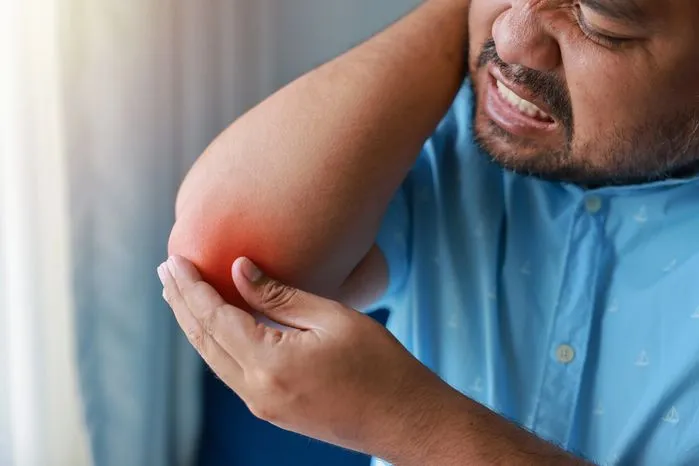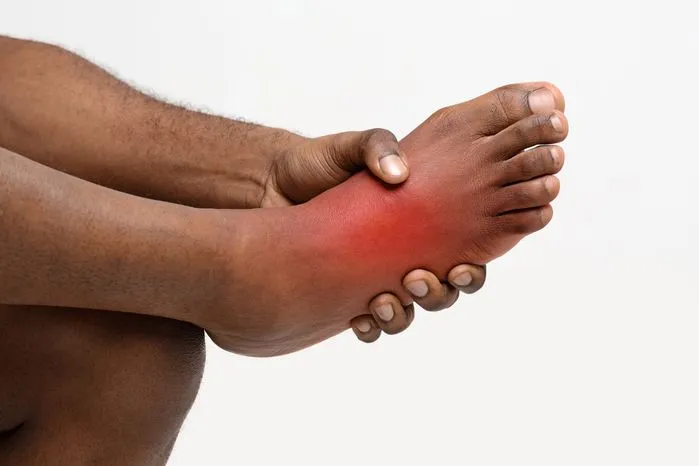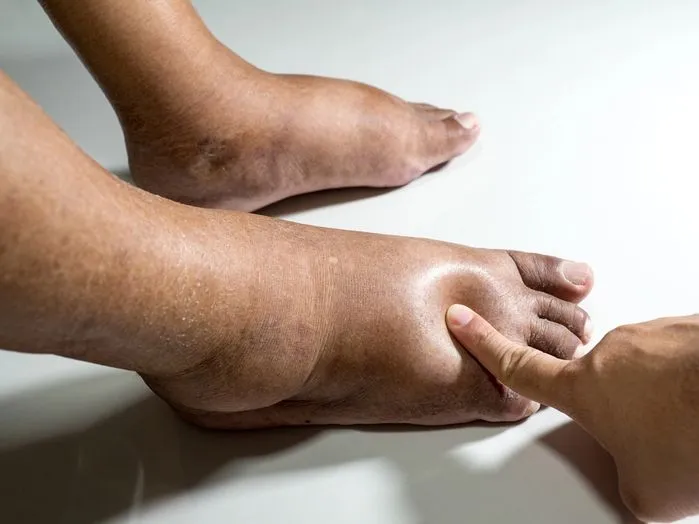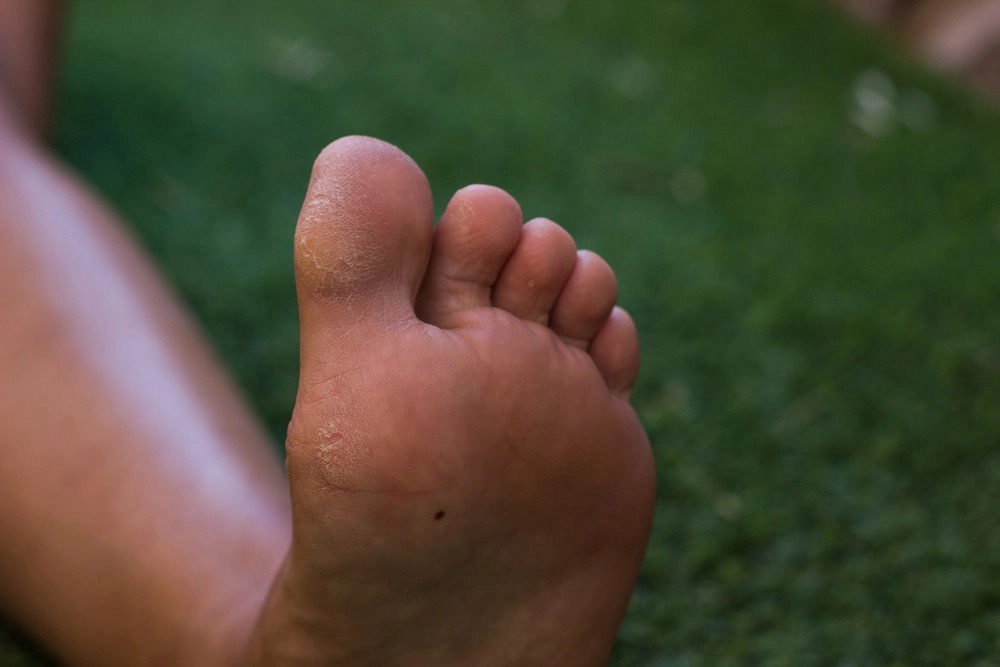
If you're battling the persistent ache of foot bursitis, you deserve more than generic advice — you need proven solutions rooted in real-world healing. At RelefordInstitute.com, we've spent years helping patients overcome bursitis through a combination of advanced treatments and time-tested natural remedies. Drawing from our direct clinical experience, this guide reveals the most effective strategies to treat, heal, and even fully recover from foot bursitis. You’ll learn not just what works, but why it works — with expert insights, patient success stories, and practical steps you can start applying today to reclaim pain-free movement.
Top 5 Takeaways
1. Get Diagnosed Early
- Recognize swelling, redness, and pain.
- Early diagnosis prevents worsening and speeds up healing.
2. Start with Non-Surgical Treatments
- Use ice therapy, compression, physical therapy, and anti-inflammatory meds.
- Choose footwear with strong arch support and cushioning.
3. Surgery is a Last Option
- Consider bursectomy only if non-surgical methods fail.
- Follow a strict rehab plan for full recovery.
4. Focus on Prevention
- Wear proper shoes and maintain a healthy weight.
- Stick to low-impact activities like swimming or cycling.
- Eat an anti-inflammatory diet.
5. Personalize Your Treatment
- No two cases are the same.
- Customized care plans lead to faster healing and lasting results.
Understanding Foot Bursitis
This inflammatory condition affects small sacs filled with fluid, known as bursae, that cushion our foot joints.
Bursitis has several causes. Repetitive stress or joint overuse often leads to bursae wear and tear, a common cause, especially in athletes or those frequently engaging in physical activities. Acute foot trauma or injury, like a hard hit or fall, can also induce bursitis.
Another type is infectious bursitis, in which bacteria infect the bursa. This usually happens when the bursa gets punctured, either accidentally or during surgery, allowing bacteria to enter, causing inflammation.
Symptoms and Diagnosis
Discerning foot bursitis symptoms can be challenging but crucial for proper treatment. Discomfort levels may vary from minor to severe, potentially impacting mobility. This discomfort might intensify with activity or contact and could present with observable swelling or redness.
For diagnosis, healthcare professionals perform physical examinations, evaluate symptoms, and consider the patient's medical history. To exclude other potential causes of foot pain, imaging tests like X-rays or MRI scans are often necessary.
Knowledge about causes is vital for the accurate diagnosis of bursitis. Frequent pressure or trauma to the foot, rheumatoid arthritis, or infections tend to trigger it. Conditions such as diabetes or gout might also be contributing factors, though less frequently.
Non-Surgical Treatment Methods
Ice therapy acts as an initial defense, applied to the affected area, it reduces swelling while alleviating pain. Compression wraps are often recommended, providing support to ease discomfort.
Beyond these tactics, rehabilitation also includes stretching exercises. Regular practice of these exercises restores mobility and strengthens muscles around the inflamed bursa. Anti-inflammatory medications can manage discomfort and minimize inflammation. Non-surgical treatments also include physical therapy.
Surgical Remedies for Bursitis
Non-surgical interventions sometimes fall short in providing enough relief from foot bursitis. In such cases, surgical remedies come into consideration. Surgery becomes an option only when traditional therapeutic measures do not yield the expected results.
Typical surgical solutions for foot bursitis involve taking out the inflamed bursa, known as a bursectomy. This operation's objective is to reduce the pain and inflammation from bursitis, offering long-term relief. Surgeons can perform this procedure through open surgery or arthroscopy, which is less invasive, employing a small camera to guide the operation. Selection between these two methods primarily relies on the severity and the surgeon's judgment.
After surgery, the recovery period differs among patients and depends primarily on aspects such as general health, age, and the specific surgical procedure carried out.
Preventing Future Bursitis Flare-ups
Surgery and extensive rehabilitation can effectively manage immediate symptoms of foot bursitis; however, proactive measures should not be overlooked to prevent future episodes. One should consider lifestyle changes and smarter footwear selection to reduce the risk of recurrence significantly.
Regular physical activity is a crucial lifestyle modification to maintain joint flexibility and muscle strength. Weight management is another key factor in reducing foot pressure.
“After treating foot bursitis cases over the years, we can tell you firsthand — no two patients heal the same way. The key isn’t just following textbook remedies, but tailoring treatment to the individual’s pain patterns, lifestyle, and recovery response. We’ve seen remarkable results using an integrative approach that combines clinical interventions like physical therapy with time-tested natural strategies — from anti-inflammatory diets to gait correction.”
Supporting Facts and Statistics
1. Occupational & Lifestyle Risk Factors
- We’ve treated countless patients in high-impact or standing-intensive roles — nurses, retail workers, and athletes.
- Repetitive motion and poor footwear are leading triggers in these cases.
- Research confirms this: jobs requiring frequent kneeling or pressure increase bursitis risk
Source: → aafp.org
2. Success of Non-Surgical Treatment
- In our clinic, most bursitis cases improve with conservative care.
- Ice, compression, anti-inflammatory meds, and physical therapy are highly effective early on.
- Mayo Clinic confirms symptoms often resolve within weeks if treated early
Source: → mayoclinic.org
3. When Surgery Becomes Necessary
- We consider surgery only when physical therapy and meds don’t work.
- Patients who undergo bursectomy often report lasting relief and improved mobility.
- Infected or chronic bursitis may require surgical removal of the bursa
Source: → stanfordhealthcare.org
Final Thoughts & Expert Opinion
Recovering from foot bursitis isn't just possible — it's achievable with a strategic, layered approach. At RelefordInstitute.com, our years of hands-on experience treating thousands of patients have revealed what truly works.
Key Lessons from Our First-Hand Experience
Healing Requires a Multi-Layered Strategy
- Early, accurate diagnosis is essential.
- Non-surgical therapies should be tailored to individual needs.
- Surgical intervention should be considered only when necessary and performed with precision.
Common Patient Pitfalls
- Many patients waste months on generic advice that doesn't address their specific condition.
- One-size-fits-all treatments rarely deliver lasting relief.
What Drives Long-Term Recovery
- Customized treatment plans based on lifestyle and foot structure.
- Consistent rehabilitation, including physical therapy and stretching.
- Preventative habits such as:
- Choosing proper footwear
- Maintaining a healthy weight
- Engaging in low-impact exercises
- Following an anti-inflammatory diet
Our Unique Perspective
- No two cases of foot bursitis are identical.
- Recovery demands personalized care, not cookie-cutter solutions.
- Combining evidence-based treatments with patient-specific plans leads to faster healing and better long-term mobility.
At RelefordInstitute.com, we believe recovery is a journey — one you can win with the right guidance, real-world strategies, and a proactive mindset.
Frequently Asked Questions
1. What is foot bursitis, and how does it occur?
Foot bursitis is the inflammation of a bursa—a small fluid-filled sac that cushions bones, tendons, and muscles—often caused by overuse, pressure, improper footwear, or repetitive motion.
2. What are the common symptoms of bursitis in the foot?
Symptoms include localized pain, swelling, tenderness, warmth, and stiffness in the affected area, often worsening with activity or pressure.
3. Which parts of the foot are most commonly affected by bursitis?
The heel (subcalcaneal bursa), the ball of the foot (metatarsal bursae), and the side or top of the foot are common areas where bursitis can develop due to friction or impact.
4. What is the best immediate treatment for foot bursitis at home?
Resting the foot, applying ice packs for 15–20 minutes several times a day, and elevating the foot can reduce inflammation and relieve initial pain.
5. Can over-the-counter medications help treat foot bursitis?
Yes, nonsteroidal anti-inflammatory drugs (NSAIDs) like ibuprofen or naproxen can help reduce pain and swelling associated with bursitis.
6. How important is proper footwear in healing bursitis of the foot?
Wearing supportive, cushioned shoes that reduce pressure and avoid irritation in the affected area is essential for healing and preventing bursitis from returning.
7. Are there natural or home remedies that help with foot bursitis?
Yes, remedies like Epsom salt foot soaks, turmeric supplements, gentle foot massages, and alternating hot/cold compresses may offer additional relief when used alongside standard treatments.
8. Can stretching and exercises help heal foot bursitis?
Yes, once inflammation subsides, gentle stretching and strengthening exercises can improve flexibility, reduce stiffness, and prevent recurrence by improving foot mechanics.
9. Is it safe to walk or exercise with foot bursitis?
Limited activity is recommended during the acute phase; once the pain decreases, low-impact activities and physical therapy can help restore mobility without aggravating the condition.
10. When should I consider seeing a doctor for foot bursitis?
If symptoms persist beyond a week, worsen despite home care, or interfere with walking, it's important to consult a healthcare provider for diagnosis and advanced treatment options.
11. What medical treatments are available for chronic or severe foot bursitis?
Doctors may recommend corticosteroid injections, custom orthotics, physical therapy, or, in rare cases, surgical removal of the inflamed bursa if conservative measures fail.
12. How can I prevent bursitis from returning in the foot?
To prevent recurrence, avoid repetitive pressure on the feet, wear proper shoes, use foot padding or orthotics, warm up before activities, and maintain a healthy weight to reduce joint stress.


















